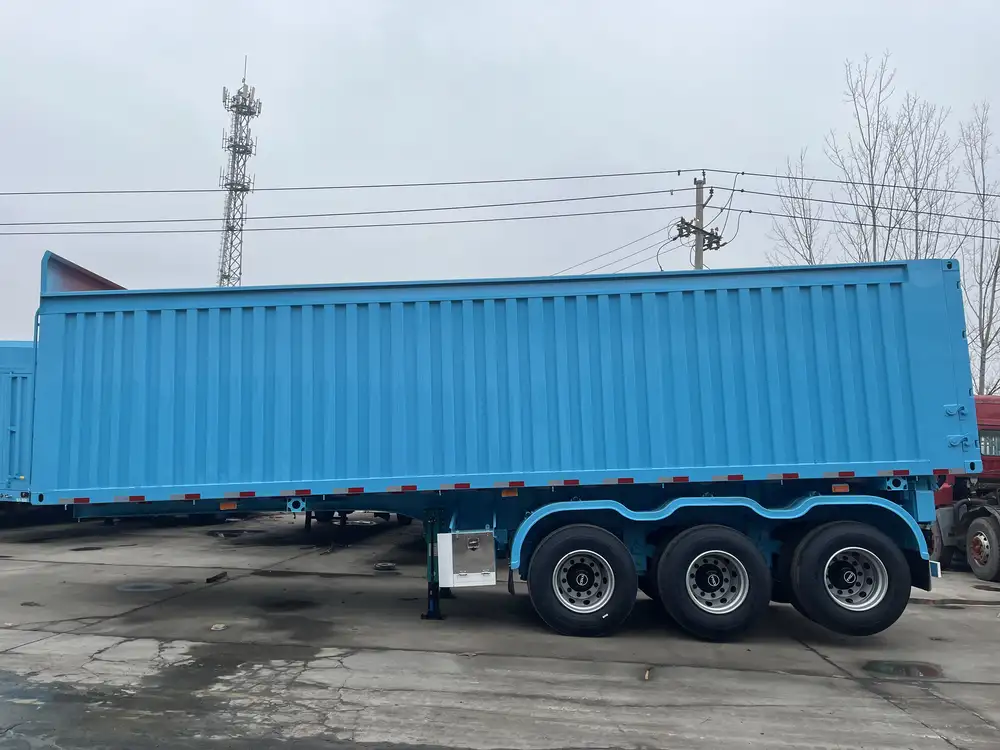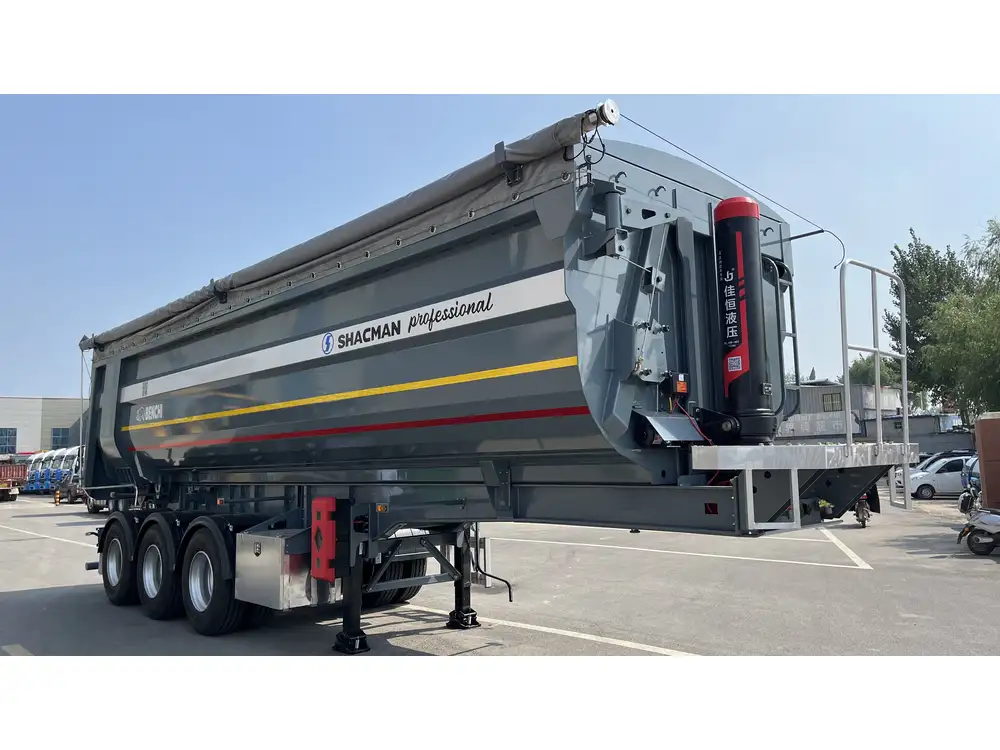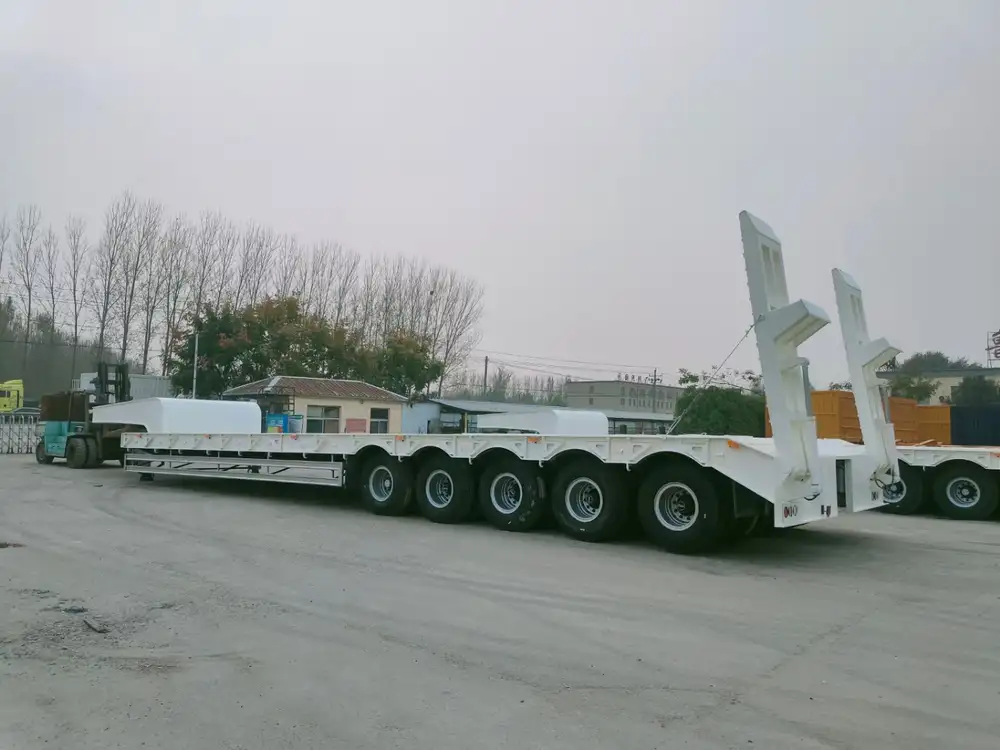Flatbed wheel trailers are versatile vehicles integral to the transporting and logistics industry. This in-depth exploration will shed light on their unique features, applications, and advantages over other types of trailers, ultimately equipping manufacturers and users alike with essential knowledge to make informed decisions.
What is a Flatbed Wheel Trailer?
A flatbed wheel trailer is a type of trailer that features a flat, level bed, allowing for the transportation of various types of cargo. Unlike enclosed trailers, flatbed trailers offer an open space, facilitating the secure loading and unloading of goods, including oversized and heavy items that wouldn’t fit in standard trailers. Their robust design caters to construction, shipping, and logistics industries where flexibility is paramount.
Key Components of Flatbed Wheel Trailers
| Component | Description |
|---|---|
| Deck | The flat surface where cargo is placed. Materials often include wood or steel. |
| Frame | The structural backbone that supports the trailer. Typically constructed of heavy-duty steel or aluminum for durability. |
| Axles | Critical for load distribution; the number of axles varies based on the trailer size and intended load capacity. |
| Wheels and Tires | Essential for mobility, requiring regular maintenance for optimal performance. |
| Tie-Down Points | Various securement points that allow for safe cargo transportation. |

Common Uses of Flatbed Wheel Trailers
Flatbed wheel trailers serve a myriad of purposes across different sectors. Understanding these applications can help businesses optimize their logistics and transportation strategy.
Construction Industry
In construction, flatbed trailers are crucial for transporting heavy materials like steel beams, heavy machinery, and prefabricated structures. The ability to load and unload from all sides enhances efficiency on job sites.
Agricultural Transport
Farmers benefit from using flatbed trailers to transport large agricultural equipment, bales of hay, and other bulky products. Their open design minimizes the risk of damage to sensitive cargo.

Shipping and Logistics
The logistics sector frequently employs flatbed trailers due to their versatility. They can accommodate loads that cannot be easily placed in enclosed trailers, like pipes, lumber, and machinery.
Specialized Equipment Transport
Flatbeds are essential for transporting oversized or non-standard items, such as wind turbine parts, building components, or even vehicles. The ability to use ramps for loading and unloading adds an extra layer of functionality.
Advantages of Flatbed Wheel Trailers
Utilizing flatbed wheel trailers over other trailer types comes with numerous benefits:

1. Easy Loading and Unloading
The flat design and often lower height of flatbed trailers mean that loading and unloading processes are simplified. This is particularly beneficial for heavy and bulky items.
2. Versatile Cargo Capacity
Flatbed trailers can handle a diverse range of cargo types and sizes, making them a flexible choice for companies with varying transportation needs.
3. Open Design Allows for Oversized Loads
The absence of walls or a ceiling means flatbeds can accommodate oversized items that standard trailers cannot.

4. Cost Efficiency
Flatbed trailers can often be lighter than enclosed models while still supporting heavy loads, possibly leading to fuel savings and lower maintenance costs over time.
Choosing the Right Flatbed Wheel Trailer
Selecting the right flatbed wheel trailer hinges on several factors, including the intended use, load capacity, and terrain conditions. Below are critical points to consider when making a choice.
Assessing Load Capacity
Understanding the maximum weight the trailer can safely carry is crucial. Be aware of the Gross Vehicle Weight Rating (GVWR), which denotes the max load the trailer can handle.

Trailer Length Considerations
Flatbed trailers come in various sizes. Choose one that fits your standard cargo dimensions to avoid issues on the road.
Material Choices
While aluminum trailers are lightweight and resistant to corrosion, steel trailers are known for their strength and durability. Evaluate which material best suits your needs based on environmental factors and expected wear and tear.
Axle Configuration
Flatbed trailers vary in axle configurations. More axles typically provide better load distribution, but can also increase costs. Choose a configuration that matches your load type.

Maintenance and Care for Flatbed Wheel Trailers
To ensure longevity and efficiency, regular maintenance of flatbed trailers is vital. Here are essential maintenance practices that can prolong the lifespan of your trailer.
Regular Inspections
Conduct routine inspections, focusing on the following aspects:
- Tires: Check tread depth and air pressure to prevent blowouts.
- Brakes: Ensure the braking system is functioning correctly for safe operation.
- Lights: Regularly test all trailer lights to meet legal requirements.
- Deck and Frame: Look for any signs of wear or damage which could compromise the trailer’s integrity.
Cleaning
Regularly clean the flatbed trailer to remove dirt, debris, and any corrosive substances. This is particularly important if the trailer is used for transporting agricultural products or materials that may promote rust or decay.

Seasonal Preparations
Prepare the trailer for seasonal changes—winterizing it to prevent damage from cold weather, and making sure it’s equipped for extreme heat during summer months.
Comparing Flatbed Trailers with Other Trailer Types
To fully appreciate the advantages of flatbed wheel trailers, it’s essential to compare them with other trailer types.
| Trailer Type | Description | Advantages | Ideal Use |
|---|---|---|---|
| Enclosed Trailers | Fully enclosed to protect cargo from elements. | Provides security and protection against weather. | Sensitive or valuable items. |
| Drop Deck Trailers | Low deck height for easier loading of tall loads. | Ideal for taller cargo not fitting in standard trailers. | Transporting items like machinery. |
| Tilt Trailers | Can tilt for easy loading and unloading. | Reduces effort required for loading heavy machinery. | Heavy equipment transport. |
Application Insights
While flatbed trailers shine in versatility and ease of access, enclosed trailers are perhaps better suited for transporting valuable goods requiring weather protection. Drop deck trailers excel in accommodating height-restricted loads. Understanding your unique requirements can lead to optimal trailer selection.

Frequently Asked Questions about Flatbed Wheel Trailers
Q1: What size flatbed wheel trailer do I need?
A1: The size of the trailer depends on the type and dimensions of the cargo you intend to transport. Assess the maximum load length and weight to determine an appropriate trailer size.
Q2: What is the maximum weight a flatbed wheel trailer can carry?
A2: This varies significantly depending on the trailer’s design and construction. Most common flatbed trailers can handle loads between 20,000 to 60,000 pounds.

Q3: Are flatbed trailers covered by warranty?
A3: Most manufacturers offer warranties, but terms vary. It’s advisable to review the specific warranty conditions to ensure adequate coverage.
Q4: How can I secure cargo on a flatbed trailer?
A4: Utilize tie-down points with securement straps, chains, or tarps for protection against movement during transport. Ensure all methods meet safety standards.
Q5: What legislation should I consider when using flatbed trailers?
A5: Regulations can differ by region; generally, ensure compliance with weight limits and proper load securement laws. Refer to your local transport authority for detailed guidelines.

Conclusion
Flatbed wheel trailers are invaluable assets in today’s transportation landscape, facilitating the effective movement of goods across various industries. With a deep understanding of their characteristics, advantages, and maintenance needs, businesses can optimize their operations, enhance efficiency, and ultimately drive improved profitability. Whether in logistics, construction, or another field, flatbed trailers offer unique solutions tailored to modern transport challenges.



